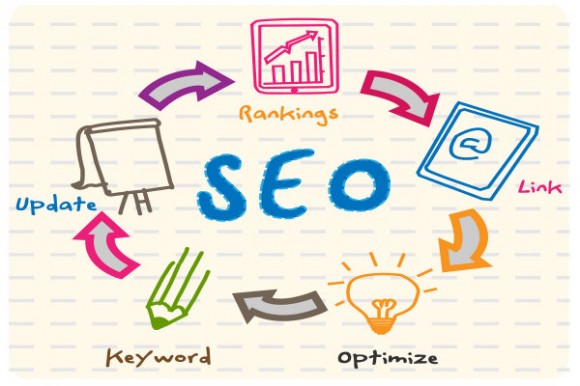For many years now there has been a battle between SEO experts and Usability – Web Design professionals on how to make your website successful.
So what can you do?
I believe that this question is like a vicious circle. On one hand you have the option to focus on SEO optimization strategies and create a website that search engines will love, rank it high for thousands of keywords and as a result attract a lot of organic traffic.
On the other hand, you can focus on creating a highly usable website with exceptional design but with minimal SEO optimization. This way your visitors will probably be highly engaged but the website traffic from search engines will be minimal due to the poor SEO optimization actions.

So, without further ado let’s examine each one of those options and how you can find the right balance between them so as to build a high traffic – high engaging website.
In order to build an SEO optimized page you need to:
• Add many words in your text (I would say more than 600 words)
• Add the keywords you have chosen repeatedly but don’t overdo it (I would say in a percentage of 2%)
• Add images with alt tags
• Add the most important keywords in the first paragraph of your text
• Add 1 or 2 links towards external pages (of course it is important that the external pages have good authority and trust, for example: Wikipedia)
• Add internal links on the keyword phrases that you want to optimize your pages/articles for
• Add the keywords you have chosen repeatedly but don’t overdo it (I would say in a percentage of 2%)
• Add images with alt tags
• Add the most important keywords in the first paragraph of your text
• Add 1 or 2 links towards external pages (of course it is important that the external pages have good authority and trust, for example: Wikipedia)
• Add internal links on the keyword phrases that you want to optimize your pages/articles for
The points in question are:
a) If you follow these instructions, will you have built an attractive page for your visitors?
If the page is not user friendly (for example if there are too many words offering no value) visitors may leave the page immediately. In that case, the bounce rate will increase, meaning bad news for your SEO.
If the page is not user friendly (for example if there are too many words offering no value) visitors may leave the page immediately. In that case, the bounce rate will increase, meaning bad news for your SEO.
b) Have you placed all those links necessary for the SEO in an appropriate manner, so that you drive the visitor where you want?
Perhaps the visitors are leaving your page because of the links you have added towards external pages. If these external pages are “too” interesting, then maybe the visitor spends more time on them than you have calculated, forgetting to return to the original source, your website.
Also the visitors could be distracted (for example if you have added too many internal links in your text) it is likely that they don’t end up clicking on the link we want them to.
Conclusion: By following these actions you will increase your website’s visitors while at the same time stabilizing conversions, which is your end goal after all.

To build a well designed page what will need to do is:
• You need less quantity of text, images, “buttons” and links. Make sure you offer the visitor useful and interesting information, as intuitively as possible. A great way to do that is to make a list, so the visitor can detect and “scan” the text for the information that they are looking for.
• You should provide less links and buttons on the page, therefore the visitor has a “cleaner” click path to follow. This way, you are driving them where you want, so you are basically managing the micro and macro conversions more efficiently.
Conclusion: The problem here is that even though you can have a high conversion rate (%), you may also have really few sales as you page receives minimal traffic due to poor keywords rankings on the SERPs. Of course there are other channels to drive traffic, for example social media, but the search engines right now represent around 40-50% of total traffic for the large majority of the websites.
How to combine SEO and Usability
So the question remains, satisfy the search engines or the visitors? The solution and answer in this problem is to achieve equilibrium. I believe a great way to write an attractive article or build a landing page is to build a page with usability in mind and at the same time to write in a neutral way (having in mind all the SEO variables) and in the end add all the SEO-elements (internal links, bold text, alt tags, etc.) if applicable.
This way your page:
a) Will have a very high probability to rise in the SERPs, and
b) At the same time the visitors, having engaged successfully with your website, could suggest your webpage to their circle of influence (their family, friends and colleagues).




No comments:
Post a Comment